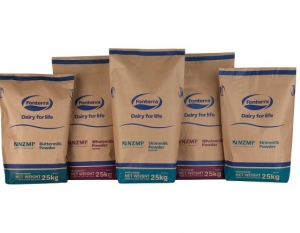After last week’s 3.9% gain in prices on Globaldairytrade it looks increasingly likely – that’s if it hasn’t already happened by the time you read this article.
Whole milk powder was up 3.4% to average US$5035/t with forward sales positions particularly firm, as they were for skimmed milk powder which added 5.6% to average US$4791/t.
“The forward curve is starting to point up a bit which is a positive,” commented BNZ economist Doug Steel to Dairy News.
While he still thinks prices will ease at some point in 2014, an ever increasing proportion of this season’s production will have been “locked down” at these historically high levels which, with a slightly weaker New Zealand dollar in recent weeks, “suggests there’s more upside”.
“I’m reluctant to put a figure on it but we do see upside on [the current milk price forecast of] $8.30/kgMS.”
Very strong demand by China and the Middle East – the latter likely buoyed by firmer oil prices – is driving the market and is to date outweighing the already growing and forecast-to-increase supply from the US and Europe, as well as New Zealand.
“That’s what makes this auction quite important. These buyers know there’s more production out there and the outlook for the next twelve months is for higher production and yet we saw higher prices. That suggests demand is increasing faster than supply.”
It also suggests a structural shift in the traditional cycle of dairy prices – the cycle is still there, it’s just going to be centred on a higher level. Where that is going to be is the big question.
Steel says BNZ “still has $6.70 on the board” for the 2014-15 season but says the longer these prices hold, the more that starts to look too low. “But it’s such early days. They’re not even into selling any product from next season yet.”
As for when there might be a shift in the processors’ forecasts for the current season, last year and in 2010 Fonterra updated its forecast on December 10, while in 2011 there was an update December 13. “So it’s a reasonable guess it will be [this] week and there’s definitely upside risk.”
















